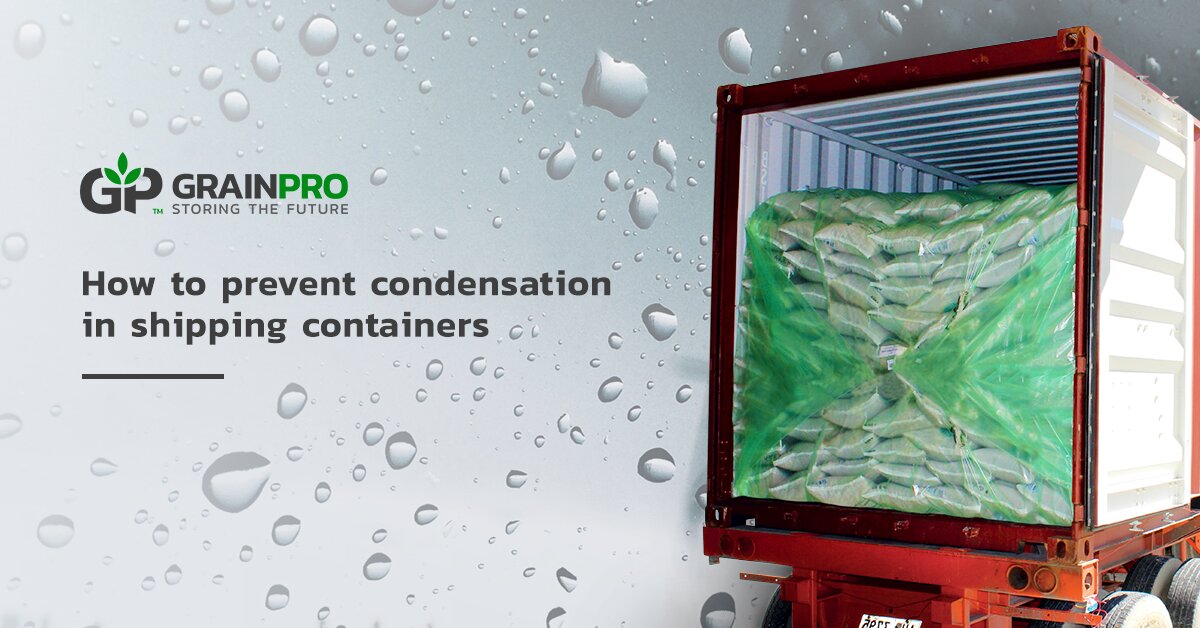How to Prevent Condensation in Shipping Containers

Transporting dried agricultural commodities can be challenging. The process requires consideration of many factors, especially moisture content and atmospheric moisture since these may cause shipping container condensation.
The ideal shipping conditions of commodities would be if the “equilibrium moisture content” is achieved. Theoretically, the commodities and the atmosphere should have the same moisture content so that no condensation will occur, resulting in zero moisture release or absorption by the commodities at any given temperature. In this situation, the relative humidity of the air is 65%, which is the threshold for mold growth.
At the same time, it should be considered that as atmospheric temperature increases, so does its ability to hold water vapor. For instance, one cubic meter of air at 20°C can hold 17 grams of water. At 30°C, that goes up to 30 grams and at 50°C, it would be 82 grams.
As the container moves from a warm, usually tropical climate, to cooler climates, the hot air inside a container (i.e. the air between the load and the ceiling, the air between the sacks, the air between the kernels) which can be as high as 50° to 60°C, absorbs moisture from the beans. When the container reaches a cooler climate, the water vapor tends to turn into water (when the air reaches its “dew point”). This usually starts at the ceiling and then may also affect the walls of the container.
The amount of water vapor the hot air can absorb is related to the total cubic meters of air in the container which is unlimited as the container is not air-tight.
With TranSafeliner (TSL), the beans are transported inside a huge air-tight bag which serves as a liner to the container. The liner is dropped loose on top of the bags, not leaving any space and therefore, the amount of air is limited to the air between the bags and the beans only. Presuming this “interstitial” amount of air has a volume of 1 cubic meter. At 30°C, that would be just 30 grams. If the temperature would go up to 50°C, this would be just 82 grams.
The liner thus limits the amount of air that can carry (and release) water. In an ordinary container, the amount of air is pretty much unlimited and therefore the scope of the damage to commodities can be substantial.
It should be added that if the commodities are shipped above equilibrium moisture content, these are much more inclined to release water to the air and therefore, the risk of condensation is always higher.
Some processors contend that they prefer the above equilibrium moisture content for the extraction process in commodities such as cocoa. However, this preference goes combined with high risk for condensation damage, resulting to mold growth.
Read more about it: Reducing Aflatoxins In Groundnuts Could Lead to Higher Profits
To anticipate any damage by the very small amounts of water that may be released inside the TSL, it is advised to insert a small amount of calcium chloride absorber inside the TSL as an added precaution.
Learn more about the TranSafeliner by clicking the button below.
Topics: Quality Food Loss Hermetic Technology Transport
